RENEWABLE RESOURCE JOURNAL FEATURED CONTENT
FEATURED ARTICLES

Russell E. Train
Published in Volume 8 Number 2
(1990)
Although organized religion has remained silent on the subject of the environment, it should be a principal vehicle for instilling environmental values in people. The major challenge to religion as it addresses the environment is to give leadership to human understanding and acceptance of essentially ecological views.

Christian G. Daughton
Published in Volume 23 Number 4
(2005)
Outlined in this paper is a sampling of some of the many alternative perspectives regarding chemical pollutants (especially those that are new to our attention - the so-called "emerging" pollutants) and their ramifications for biological systems and society's values. A primary objective in presenting these alternative views of chemical pollution is the hope of catalyzing dialog and debate regarding new approaches for its management.

David Schoenbrod
Published in Volume 24 Number 4
(2007)
In the 1970 Clean Air Act, Congress took responsibility for a rule that would eventually reduce lead exposure from automobile emissions. The act authorized the EPA to require that new cars made from 1975 onward use only lead-free gasoline. Their motivation was not environmental protection, however, but the protection of a new pollution-controlling catalytic converter in automobile engines that would be ruined by lead.
The rules and actions that followed cast doubt on the assumption upon which the EPA's rulemaking power is based - that "only an expert agency insulated from politics can do the right thing." The EPA was supposed to insulate environmental rules from politics. But it did not; it insulated the politicians in Congress from responsibility.

Bruce Babbitt
Published in Volume 26 Number 3
(2010)
The onset of global warming is reshaping the face of the land from mountains heights, through river basins and along the coasts of our country, affecting forests, wetlands, prairies and agriculture. Precipitation patterns are changing. Storm events are becoming more extreme, generating more frequent and intense flooding along river channels. However, the most extensive changes in the land wrought by climate change are now occurring along our coastlines.
Sea levels are rising more or less uniformly across the planet, driven by thermal expansion of ocean water and increased volumes of water reaching the oceans from melting ice caps in Greenland and Antarctica, as well as terrestrial glaciers. Along our coasts these rising sea levels are steadily encroaching upon lowland regions, and inevitably coastal flooding will require major adjustments in land-use patterns.
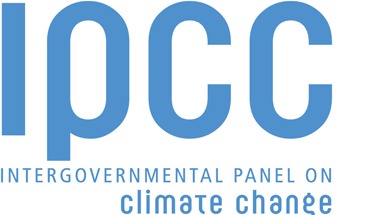
Intergovernmental Panel on Climate Change
Published in Volume 27 Number 1
(2011)
Carbon capture and storage (CCS) technologies may be an option for capturing carbon dioxide before it enters the atmosphere and sequestering the gas terrestrially. The U.S. and governments around the world are evaluating the allocation of financial resources for this and other mitigation options. This article highlights some of the major challenges associated with CCS, including site selection, transportation, monitoring, risk management, liability, financial requirements and knowledge gaps.
The IPCC report indicates that due to high costs, CCS systems are unlikely to be deployed on a large scale in the absence of explicit government policies that require substantial reduction of greenhouse gas emissions to the atmosphere.
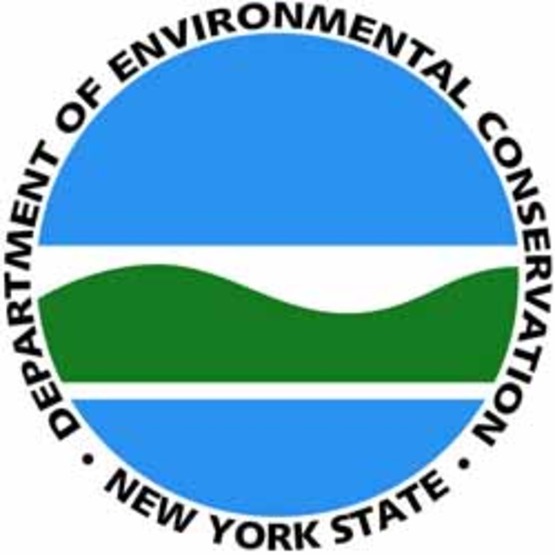
New York State Department of Environmental Conservation
Published in Volume 27 Number 3
(2013)
This article is a series of excerpts from New York's draft Supplemental Generic Environmental Impact Statement (dSGEIS) regarding high-volume hydraulic fracturing (HVHF). The dSGEIS reviews the risks of HVHF activity including water withdrawal, transportation, the use of additives in water, facility requirements, and waste disposal. It also outlines the regulations and restrictions that should be imposed on HVHF to safely and sustainably develop shale gas resources.

Lloyd's of London
Published in Volume 28 Number 1
(2014)
Damages from natural catastrophes in the U.S. are rising and are expected to continue to grow in the future. Increases in population and economic activity coupled with development in riskier and more environmentally vulnerable areas, will expose more property, infrastructure and other assets to damage from natural catastrophes.
In this paper Lloyd’s sets out a set of principles for addressing the challenge of managing natural catastrophe risks in the U.S. Ways that the insurance industry, government and property owners can work together to manage increasing natural catastrophe risks and make insurance in catastrophe-exposed areas more available and affordable for U.S. policyholders are examined.

Adapted from a lecture by Adam Frank
Published in Volume 33 Number 3
(2019)
This report, adapted from a lecture by Adam Frank in May of 2017, describes climate change not as a one-time, exceptional phenomenon, but as the most likely scenario for any energy-harvesting civilization. Across the universe, there have likely been many such civilizations. Frank makes the argument that the Anthropocene is a natural part of humanity's development; climate change is inevitable, but whether or not we can create a sustainable civilization is an open question.
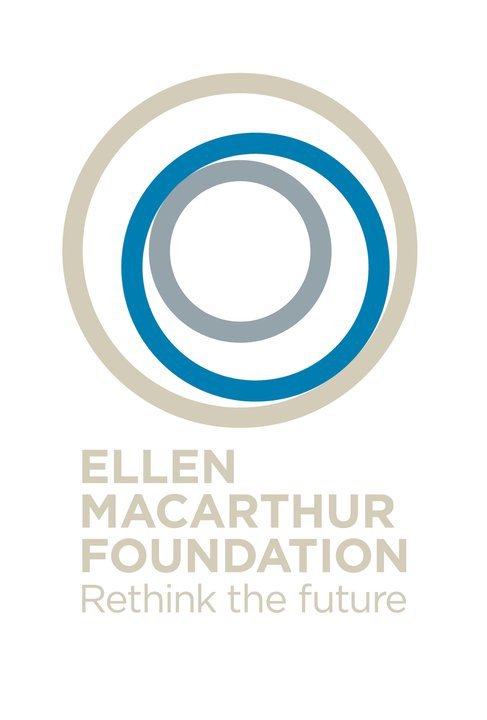
Adapted from a report by the Ellen MacArthur Foundation
Published in Volume 34 Number 2
(2020)
Plastic is everywhere, but insufficient thought is given to what happens after it is discarded. Most plastic is considered waste after its first, brief use. In the absence of an efficient recapture process, plastic “leaks” into the environment, most notably into the oceans, and creates damage far exceeding its original value. Plastic should be managed as a precious commodity because its cost skyrockets when allowed to occupy natural environments. Plastic in the environment is a big and complicated problem – the solution also is big and complicated.
The Ellen MacArthur Foundation, in partnership with the World Economic Forum and McKinsey & Company, proposed the implementation of a circular plastics economy to deal with these issues. Their roadmap to creating a sustainable lifecycle for plastic packaging is described in The New Plastics Economy: Rethinking the Future of Plastics. This Renewable Natural Resources Foundation (RNRF) Special Report summarizes the key ideas and concepts of the New Plastics Economy.

David Sedlak
Published in Volume 34 Number 4
(2020)
America's water infrastructure is aging, and utilities have a chronic funding shortage for repairs. This shortfall is so severe that the American Society of Civil Engineers has rated the drinking water infrastructure of the United States a D-minus or D for over a decade. Reluctance to invest preemptively in infrastructure means that too often, water systems are allowed to deteriorate until they almost fail, and repair only happens once the public decides the status quo is unacceptable. In this article, David Sedlak describes this troubled history of America's water infrastructure, and the challenges that it will face in the future.
FEATURED CONGRESS REPORTS
In addition to the congress reports listed below, all other congress reports are identified and available for download at our past congress page.
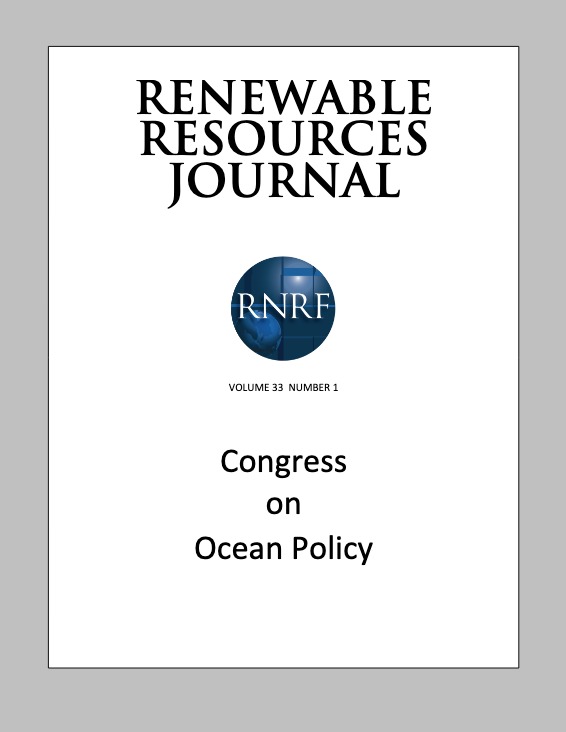
Ocean Policy
RNRF's Congress on Ocean Policy was presented at the National Union Building in Washington, DC on December 6, 2018.
Oceans are being affected by the chemical and physical impacts of climate change, unsustainable interference with sea life populations, unprecedented destruction of marine habitats, and life-threatening pollution from land- and sea-based activities.
Congress speakers outlined the challenges of tackling ocean issues that have global implications, amplifying the need for all nations to embrace the international governance framework of the United Nations Law of the Sea Convention. Delegates further discussed solutions to broad environmental degradation from both land-based pollution and climate change. Global impacts on marine mammals from the far-traveling acoustic disturbances of commercial shipping, naval exercises, and offshore development were also characterized. Delegates also highlighted local, state, and federal collaboration on marine resource management through regional ocean plans. The final presentations explored policy development and ecosystem impacts of offshore wind, petroleum, and deep-sea mineral resource extraction.
Click here to download the 2018 Congress Report.
More information on the 2018 congress is available here.
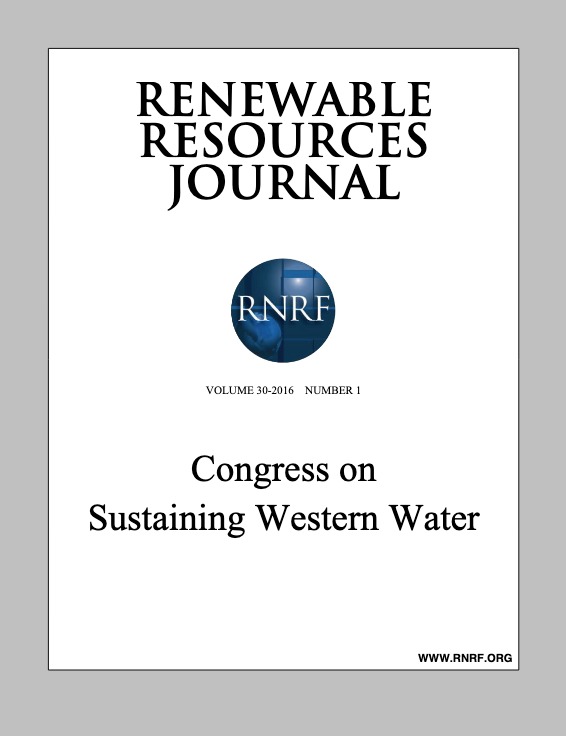
Sustaining Western Water
RNRF's Congress on Sustaining Western Water was presented at the headquarters of the American Geophysical Union Conference Facility in Washington, DC on December 1-2, 2015.
In recent years, the western United States has experienced unprecedented drought levels. While precipitation patterns in the region are highly variable, the National Climate Assessment predicts that drought trends will likely intensify over this century and beyond, with longer-term droughts anticipated. Nevertheless, population in the western states has increased rapidly, and the region continues to support significant agricultural production. Strategies for coping with drought have a long history in the region, but it will be a challenge to adapt and apply these strategies to severe projected droughts.
Click here to download the 2015 Congress Report.
More information on the 2015 congress is available here.
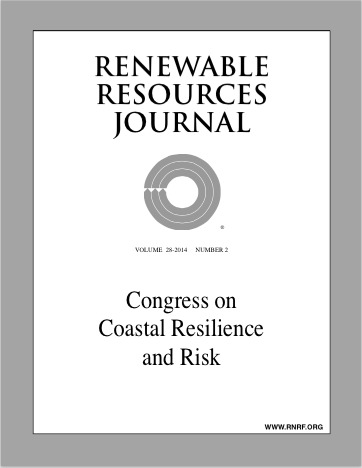
Coastal Resilience and Risk
RNRF's Congress on Coastal Resilience and Risk was presented at the NOAA Center for Weather and Climate Prediction in College Park, MD on December 11-12, 2013.
Coastal communities are becoming increasingly vulnerable to extreme weather events due to rising sea levels, disappearing wetlands, and increasing development.
As the international community works to limit the impending impacts of climate change, more must be done to implement adaptation and mitigation measures needed to protect our coastal communities and economic assets. The coasts of the United States are home to over half of the nation’s population and generate nearly half of the nation’s domestic product. It is essential that the United States accelerate the national dialogue on the future of our coasts. This dialogue must necessarily occur parallel to debate on federal spending and a re-evaluation of the role of the federal government.
Click here to download the 2013 Congress Report.
More information on the 2013 congress is available here.
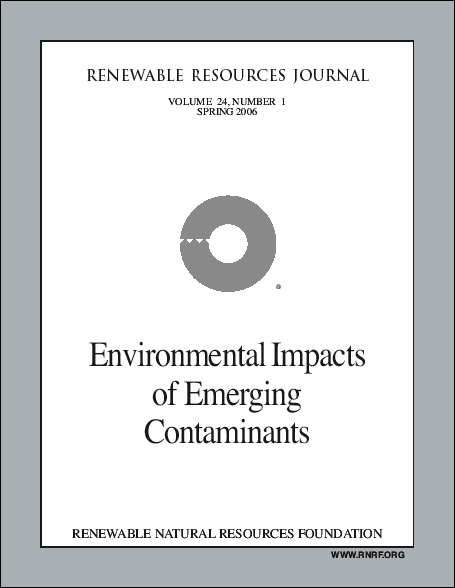
Environmental Impacts of Emerging Contaminants
RNRF's "Congress on Assessing and Mitigating Environmental Impacts of Emerging Contaminants" was presented at the American Geophysical Union Headquarters in Washington, DC, December 1-2, 2005.
Recent news accounts report the decline of amphibian populations worldwide, the feminization of male fish, and other disturbing trends. Our increasing use (and accompanying environmental releases) of various man-made compounds is suspected of contributing to these trends. Recently published data from U.S. Geological Survey scientists showed that 80 percent of sampled streams contained contaminants--samples often contained multiple contaminants.
Many pesticides, pharmaceuticals, industrial chemicals, nanoparticles, microorganisms, and other compounds are emerging as contaminants to which we must devote more attention. Too little is known about the effects that these agents have on human or ecosystem health, how to control their release into the environment, and the potential for hazardous by-products. We still are seeking ways to apply insight gained from past experiences when new chemicals and technologies surprised us with unintended health and environmental consequences. More than 80 scientists, managers, and professionals, from 50 organizations made findings and recommendations on steps necessary to address these challenges.
Click here to download the 2005 Congress Report.
More information on the 2005 congress is available here.
